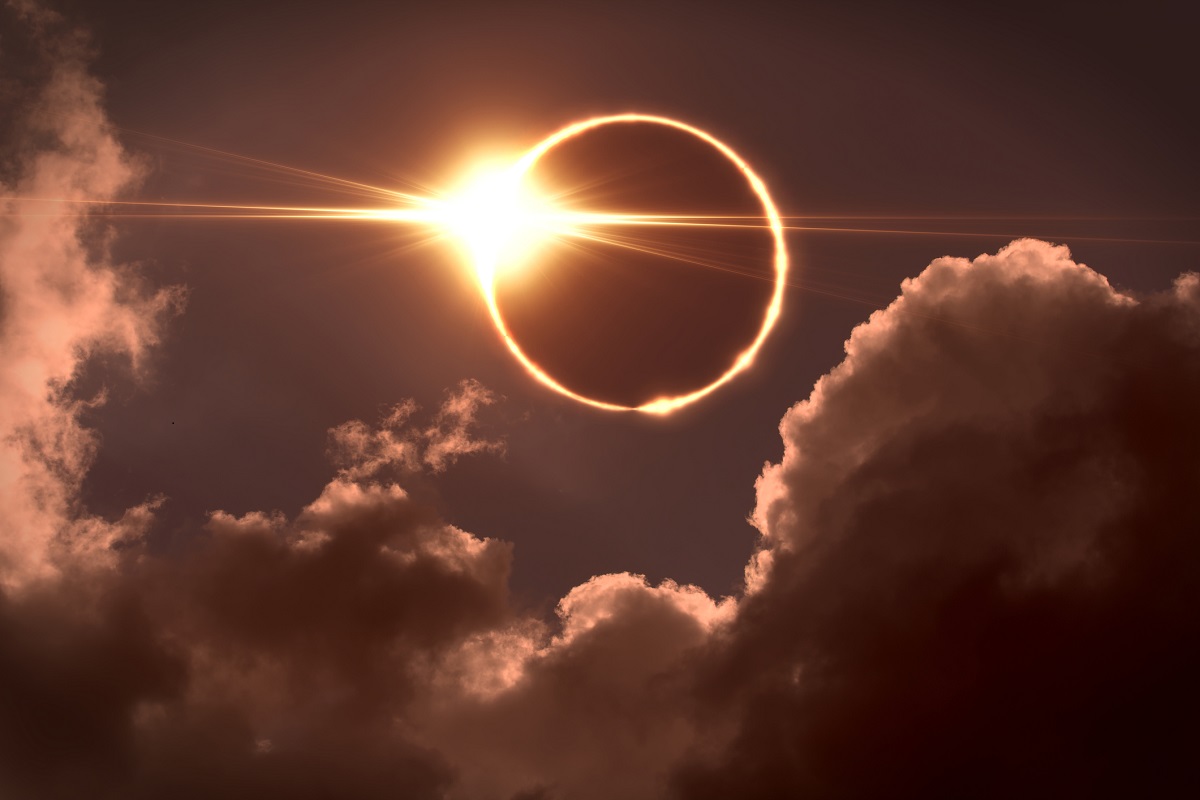 Credit: Getty Images | Pitris
Credit: Getty Images | Pitris
Call it destiny that Starr Schroeder grew up fascinated with astronomy. An Emergency Department nurse at Penn State Health Lancaster Medical Center, she’s also a solar system ambassador for the National Aeronautics and Space Administration (NASA), sharing her love and knowledge of space-related missions, science and medicine with children. And right now, that includes eye safety for viewing the solar eclipse on Monday, April 8.
March 27, 2024
Only the northwest corner of Pennsylvania is in the path of totality ― meaning you can see the moon fully blocking the sun’s face, turning the afternoon to night for about four and a half minutes. It’ll be a partial eclipse for the rest of the state including central Pennsylvania, which will experience anywhere from 90% to 95% coverage.
- To see the time and percentage of sun coverage for the April 8 eclipse in your area, visit NASA’s Eclipse Explorer and enter your zip code.
“At no point during a partial eclipse is it safe to look at the sun without special eye protection,” Schroeder said. “Not even the darkest sunglasses are safe.” She’s been handing out NASA-provided solar viewing glasses to Lancaster-area children ahead of the eclipse.
Dr. Ajay Soni, a pediatric ophthalmologist who sees patients at Penn State Health Children’s Lancaster Pediatric Center in Manheim Township, echoes Schroeder’s warning about the potential eye damage from observing an eclipse improperly.
Sunburned corneas, scarred retinas
“Watching a solar eclipse without proper protection can damage both your cornea and your retina,” Soni said. Photokeratitis can be caused by exposure to the sun’s ultraviolet rays.
“It’s a sunburn on the cornea, and is quite painful because the cornea is so sensitive,” he said, noting that patients typically recover on their own within a few days.
A more serious risk from improper protection during an eclipse is solar retinopathy, which can cause permanent eye damage. Unlike photokeratitis, there’s no pain associated with this condition, which causes scarring on the retina. Symptoms can include mild to moderate loss of central vision, blind spots, problems seeing colors, distorted vision or seeing wavy lines. Those experiencing any of these vision problems should seek medical care immediately.
Tests like optical coherence tomography allow ophthalmologists to see damage or irregularities in the retina that can point to the diagnosis of solar retinopathy. Sun gazing, improper eclipse viewing and laser pointers are the primary causes of solar retinopathy. There is no cure for solar retinopathy. Vision recovery may occur to variable degrees over the course of hours to months after the injury, but often there is some degree of permanent impairment. The reason to seek immediate medical care for symptoms is to rule out treatable causes for the vision disturbances.
How to protect your vision
Soni stresses that the only way to observe a partial eclipse safely is through eclipse glasses that are compliant with the International Organization for Standardization (ISO). Filters should be ISO 12312-2 standard.
“These filters are at least 1,000 times darker than regular sunglasses. They also offer more protection than welder’s glasses,” he said.
Another way to view the partial eclipse safely is with pinhole projection, which keeps the sun behind the observer and projects a solar image of the eclipse onto a nearby surface:
- Get two white paper plates and poke a tiny hole in the middle of one.
- With your back to the sun, hold the hole-punched paper plate above your shoulder, allowing the sun to shine through the hole.
- In front of you, hold out the second paper plate, on which you’ll see projected an inverted image of the partially eclipsing sun.
Guidance for those traveling to ‘totality’ destinations
Schroeder, an Indiana native, will head back to her hometown for the full eclipse and provide NASA-provided, ISO-compliant eclipse glasses to families at a local YMCA ahead of the big event.
Soni has extra guidance for those like Schroeder who will be travelling to experience “totality.”
Unlike a partial eclipse, there is a brief time period when a full eclipse can be watched without eye protection – during totality, when the moon completely covers the sun. “Once any part of the sun reappears, look away from it immediately and put your eclipse glasses back on before looking up at it again,” Soni said.
After April 8, the next opportunity to see a full eclipse in the U.S. will be Tuesday, Aug. 23, 2044, and the path of totality will only go through Montana, North Dakota and South Dakota.
Related content:
- The Medical Minute: How parents can prioritize their child’s eye health
- The Medical Minute: Diabetes diagnosis demands close eye on vision
The Medical Minute is a weekly health news feature produced by Penn State Health. Articles feature the expertise of faculty, physicians and staff, and are designed to offer timely, relevant health information of interest to a broad audience.
